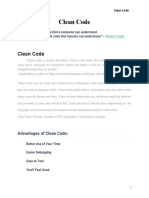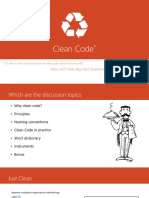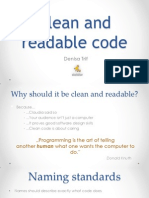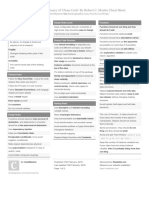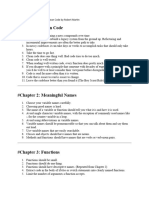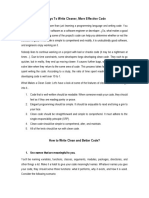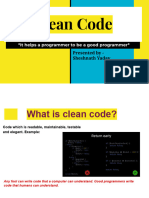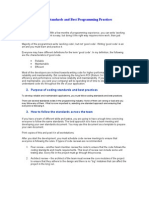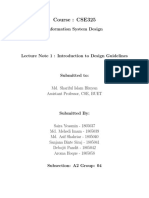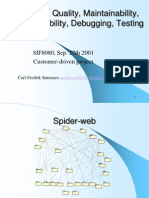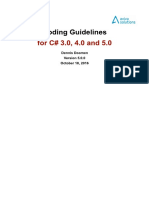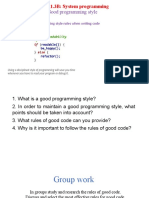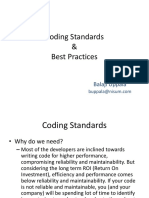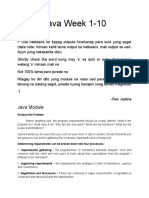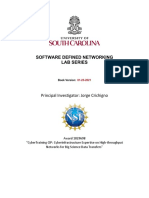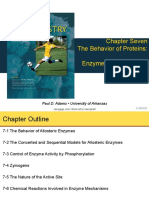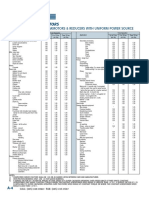0% found this document useful (0 votes)
18 views75 pagesClean Code
The document discusses principles and practices for writing clean code, emphasizing readability, meaningful naming, and simplicity. It highlights the importance of well-structured code that is easy to understand, maintain, and extend, while also providing guidelines on naming conventions and code organization. Key concepts include the Single Responsibility Principle, avoiding duplication, and adhering to established design guidelines.
Uploaded by
sohaso7499Copyright
© © All Rights Reserved
We take content rights seriously. If you suspect this is your content, claim it here.
Available Formats
Download as PDF, TXT or read online on Scribd
0% found this document useful (0 votes)
18 views75 pagesClean Code
The document discusses principles and practices for writing clean code, emphasizing readability, meaningful naming, and simplicity. It highlights the importance of well-structured code that is easy to understand, maintain, and extend, while also providing guidelines on naming conventions and code organization. Key concepts include the Single Responsibility Principle, avoiding duplication, and adhering to established design guidelines.
Uploaded by
sohaso7499Copyright
© © All Rights Reserved
We take content rights seriously. If you suspect this is your content, claim it here.
Available Formats
Download as PDF, TXT or read online on Scribd
/ 75





